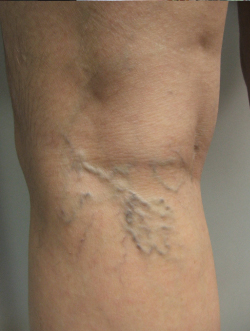Chronic Diseases
Varicose veins are swollen, twisted, and at times painful veins that have filled with an abnormal amount of blood. Normal veins have valves in the vein keep blood moving forward toward the heart. In varicose veins the valves do not function properly allowing the blood to remain in the vein. This pooling of blood causes the vein to enlarge. Varicose veins typically occur in the veins of the legs, where the valves are the most important.
Besides having visible, enlarged veins, varicose veins can also show with mild swelling around the ankles, brown skin color at the ankles, or sometimes an throbbing pain in the legs. The pain in the legs can be due to the large veins pushing against and irritating the surrounding nerves. If the swelling becomes sever, skin wounds can develop around the ankle. These symptoms are made worse by standing or sitting with the legs dangled for long periods. Varicose veins occur due to defective vain valves from birth, pregnancy, or blood clots.
Treatment
Non-surgical treatments include sclerotherapy, elastic stockings, elevating the legs, and exercise. The traditional surgical treatment has been vein stripping to remove the affected veins. Newer, less invasive treatments, such as ultrasound-guided foam sclerotherapy, radiofrequency ablation and endovenous laser treatment, are slowly replacing traditional surgical treatments.
